Mulching my polytunnels
What a challenge! I decided I wanted to start mulching my polytunnels. But this is also one of the most important spots in my garden where I grow so many vegetables. So, how to combine the two? I think I've found a good solution!
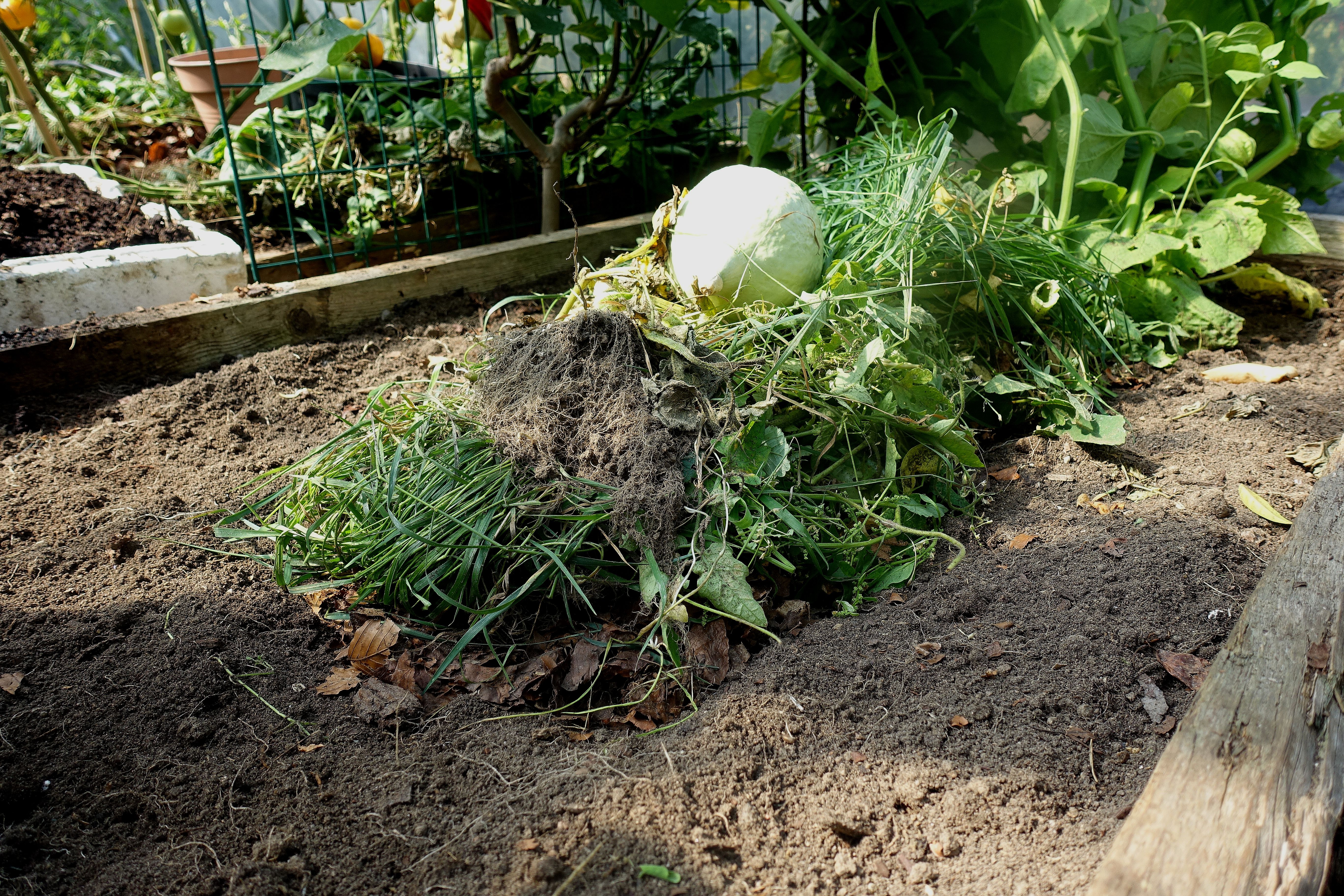
A small layer of mulch is better than nothing right now. I was inspired by keyhole gardening and decided to put a pile in the middle of the bed.
I just started on a new project in my garden: Mulching my polytunnels. It's a fun but daunting task. I used to mulch my first polytunnel with grass clippings in the summer of 2014 and got great results! But then I removed the mulch when winter came and I needed the space to grow my vegetables in tight rows. Since then, I have only tried smaller mulching projects in the polytunnel.
The large polytunnel I got in 2015 is a different story. I haven't really been mulching much in there at all. My goal is to grow plenty of vegetables in tight rows in my tunnels. I always thought that covering the soil might make the whole process a lot slower. There would just be too many things to keep track of at the same time. Instead, I decided to dig down organic mulch in my beds. But this method doesn't process as much material as traditional mulching does of course.
Excited about the soil analysis
One of the takeaways from the soil analysis I did is that mulching my polytunnels would make a huge difference for my soil. I especially need to increase the amount of phosphorus and magnesium, get a higher pH value and some more humus. All of this put together would make the perfect environment for my vegetables.
Read more: Soil analysis part 2 - Mulching works!
I think I can make all of this happen simply with the help of mulch. Mulching my polytunnels will raise the pH value in there, which is something I need since I fertilize the polytunnel with diluted urine (sour.) Mulching would most likely also help increase the levels of phosphorus, magnesium and humus in the soil. All in all, this seems to be the best method.
Now, I just need to think about how to do this. The soil is filled with vegetables or new sowings almost all year round. I use my polytunnel beds quite intensely and I often need to grow my vegetables in tight rows. This means that I can't just keep large layers of mulch on top of the soil at all times. So, what to do?
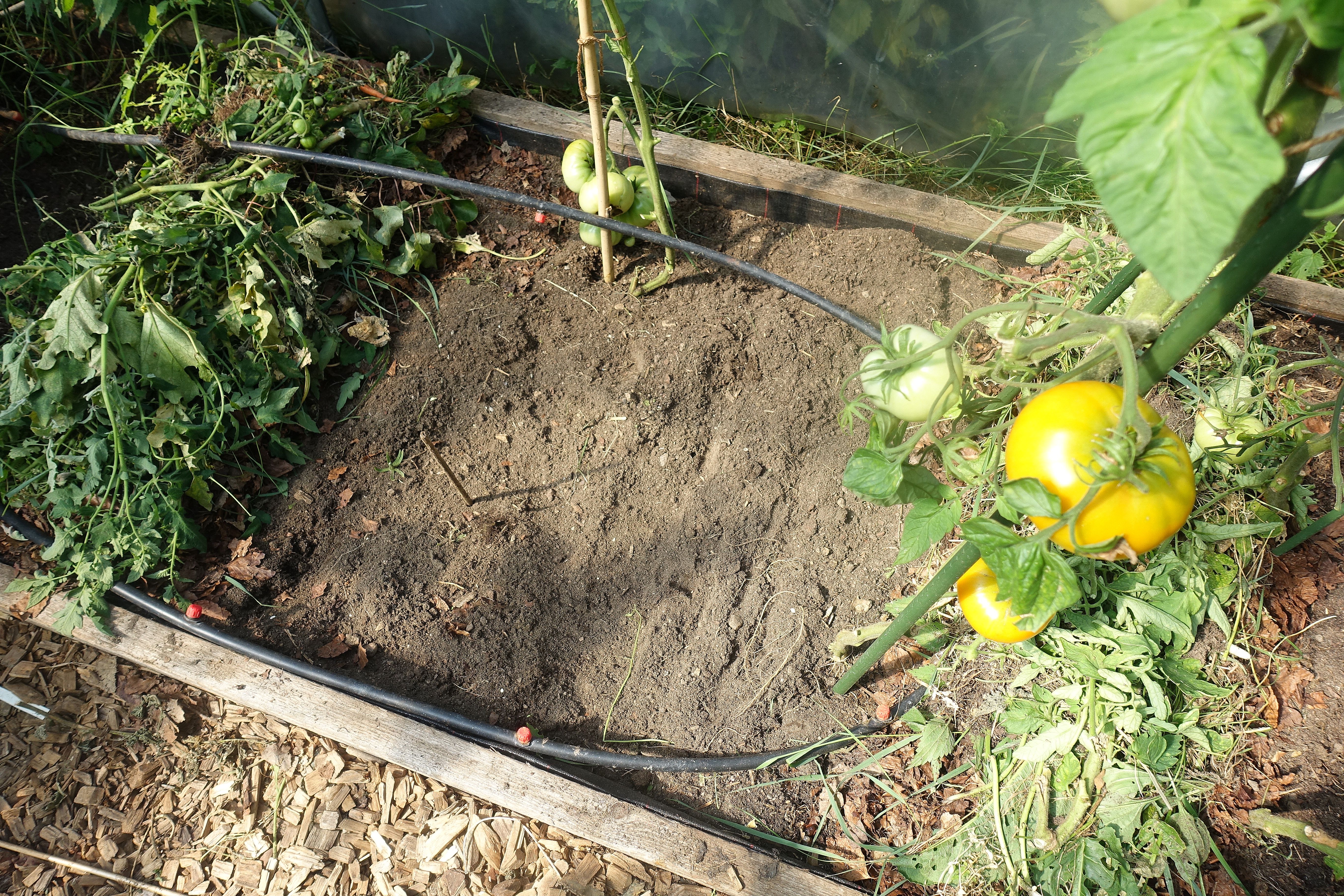
Putting mulch in ridges means that I really can have it all, mulched beds and a lot of plants in tight rows, all year round!
You can read more about the soil analysis of my polytunnels and the beds outside here on Sara's Kitchen Garden.
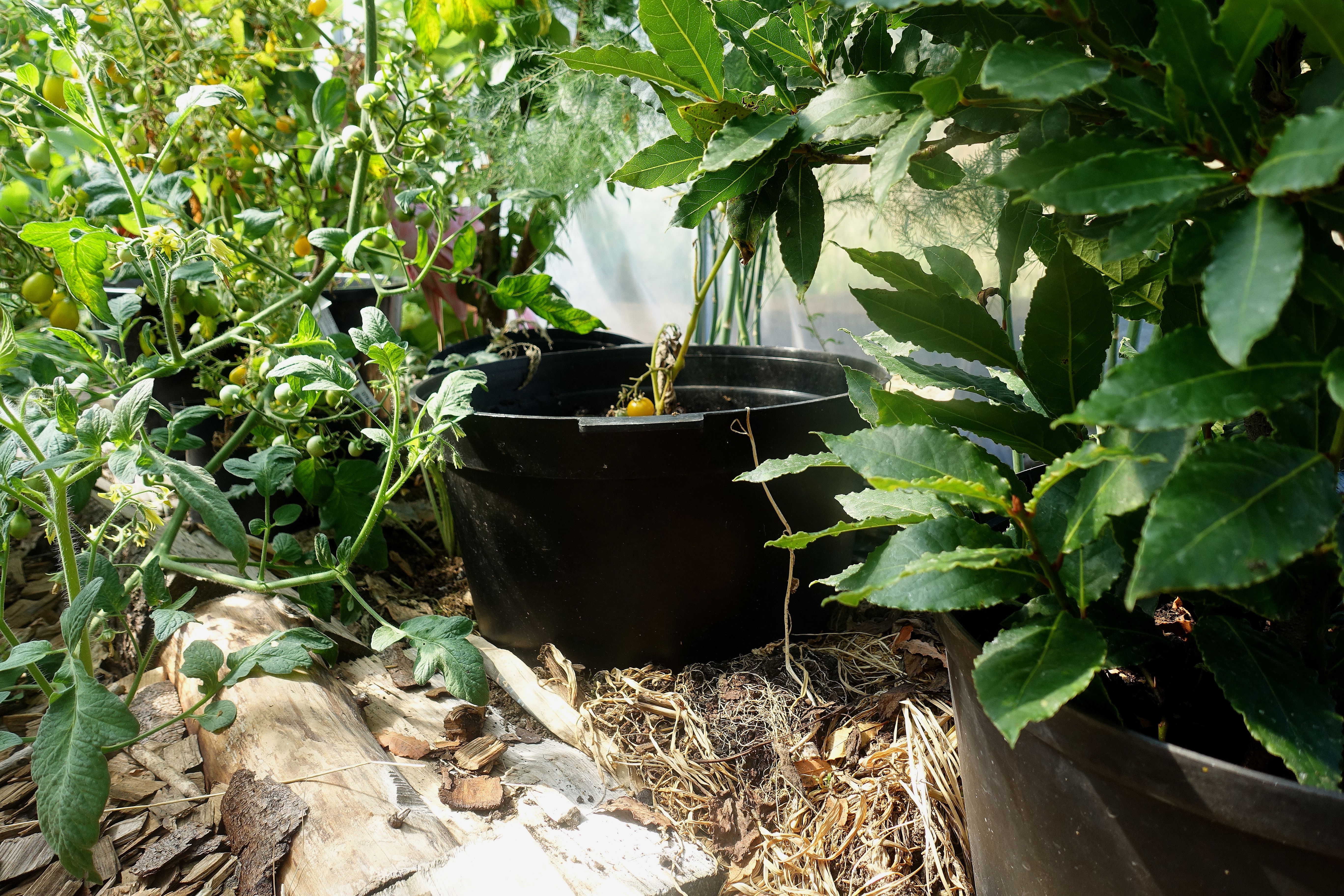
I have been covering the ground under my fruit trees with plant parts over a layer of newspapers all summer. This procedure will help keep the soil moist for the trees.
Three mulched beds
Earlier this summer, I started on a mulching project underneath my fruit trees in one of the beds in my polytunnel. I created the mulched bed by simply putting newspapers (non-toxic ink) and old plant parts from my polytunnel on top. My goal was to keep the moist in the soil for the sake of the trees. This summer, I also decided to put large pots on my mulched beds. The extra water I used for the plants in the pots just trickled down to the mulch and added to the moisture of the soil.
I made three of these beds right after I got the results from the soil analysis.
I also decided to mulch the large pots too, simply by putting grass clippings on the soil. It really helps on warm and dry days.
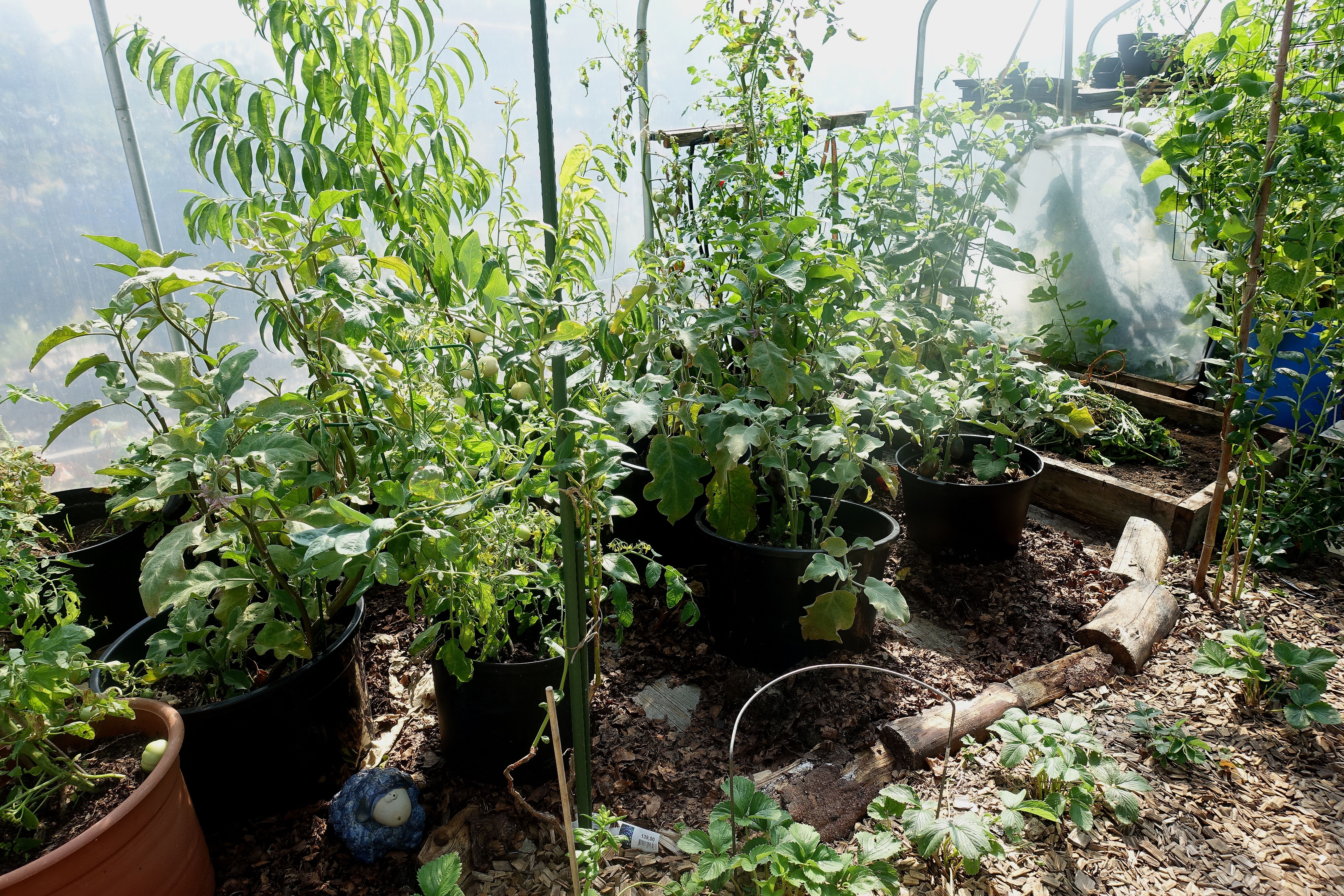
I'm going to start sowing vegetables here in this new mulched area in fall. I plan on putting some cabbage and lettuce here.
Inspired by keyhole gardening
But what about the already established beds then, what can I do there? The main idea is of course that I need larger spaces with bare soil where I can grow my vegetables. I want to be able to sow and plant in tight rows and also grow taller plants like tomatoes in summer, with low-growing plants underneath. This will of course mean that I can't exactly add layers and layers of mulch to my beds.
I have already tried adding a little bit of mulch to these spots. I'm hoping that I can use these areas as little mini composts right on the soil, and that this will improve the soil quality.
I dug holes in the middle of two smaller beds (2 ft 7 x 4 ft 11) and then added a bucket of bokashi compost (see the top picture in this post.) I put some of the soil back on top of the compost, but most of it is scattered around. Then, I put some leaves and plant parts from the polytunnel in the hole over the compost. The idea is that the material will start to break down and the worms will spread nutritious soil in the entire area. A big inspiration for this process is the so called keyhole gardening.
Mulch ridges
I decided to build long ridges of mulch material in the long beds in my polytunnel, where I grow leafy greens in winter and larger heat-loving plants in summer. I placed the ridges about three feet apart and started by making a little ditch and adding a layer of leaves, followed by some plant parts.
The idea is that I will keep digging down bokashi compost between the ridges. I can simply dig a hole in the soil between the ridges and then add some compost when I want to start growing something new.
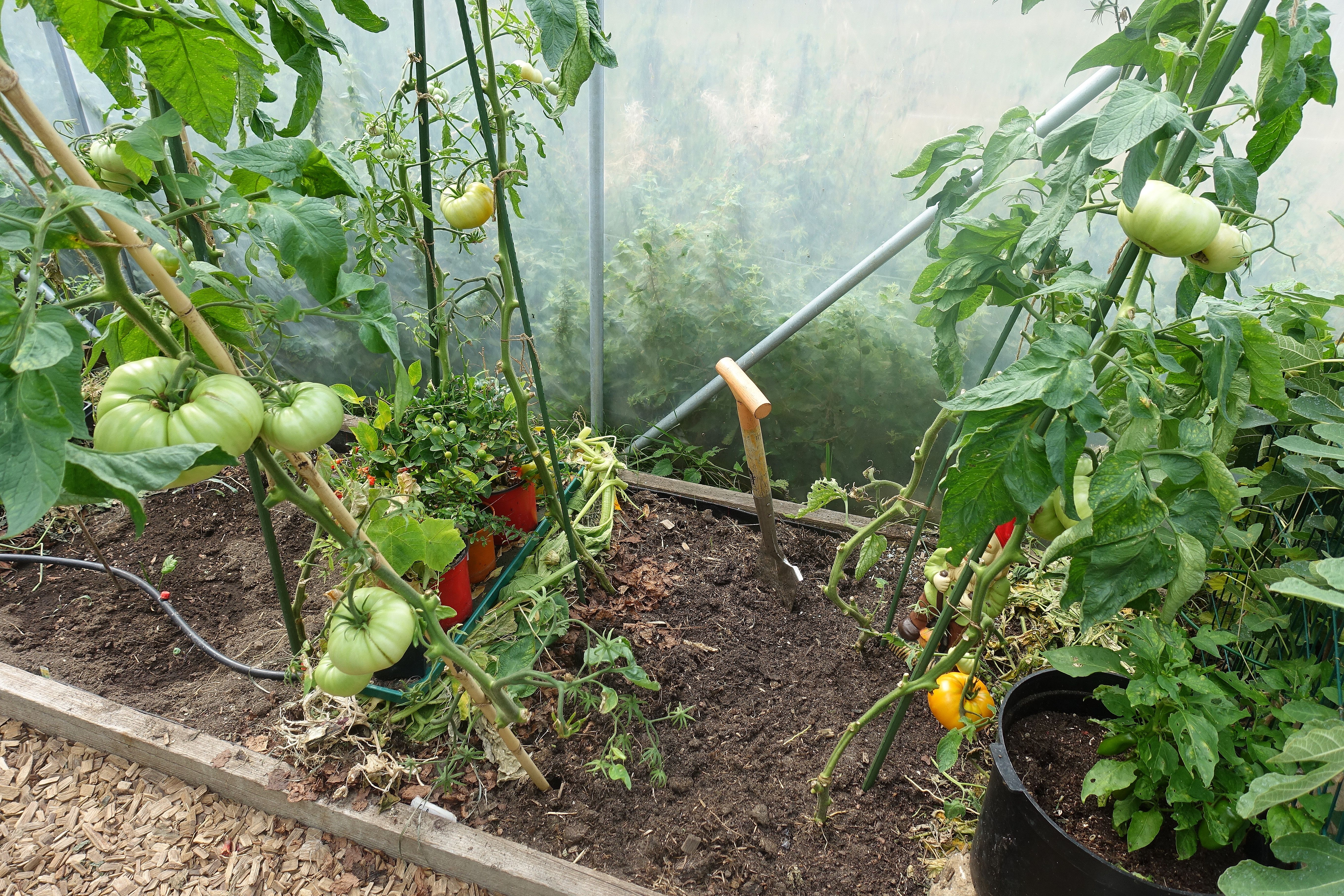
I sowed some lettuce and winter lettuce in the soil between the ridges and the tomato plants. I try to water the soil regularly to keep the soil cool, and I sowed the lettuce on a cloudy day (lettuce seeds don't want to germinate in soil that's too warm.)
Get started!
I feel very happy about how far I've come and I think I have a good plan for the future mulching my polytunnels like this. Planning can always be a bit tricky though, it's so easy to get stuck and start to worry about the small details. I like to dive in instead, that works best for me.
This philosophy is actually especially helpful when it comes to mulching. In order to get going with building mulched beds, you first need a good space with enough room for all kinds of plant parts. Far from all of the material in a mulched bed consists of grass clippings and ensilage after all. You will probably need a spot to put all kinds of scraps and plant parts. It might even turn into your go-to composting spot so to speak. When you have a designated spot to put all of the scraps, I think it's easier to make a habit of "feeding" the soil. It's especially important in late summer and fall when there's usually a lot to compost.
It's easy to add more material to these little ridges in my polytunnel, for example when I prune my tomato and cucumber plants. Hopefully, I can do another soil analysis in a few years and get even better results then!
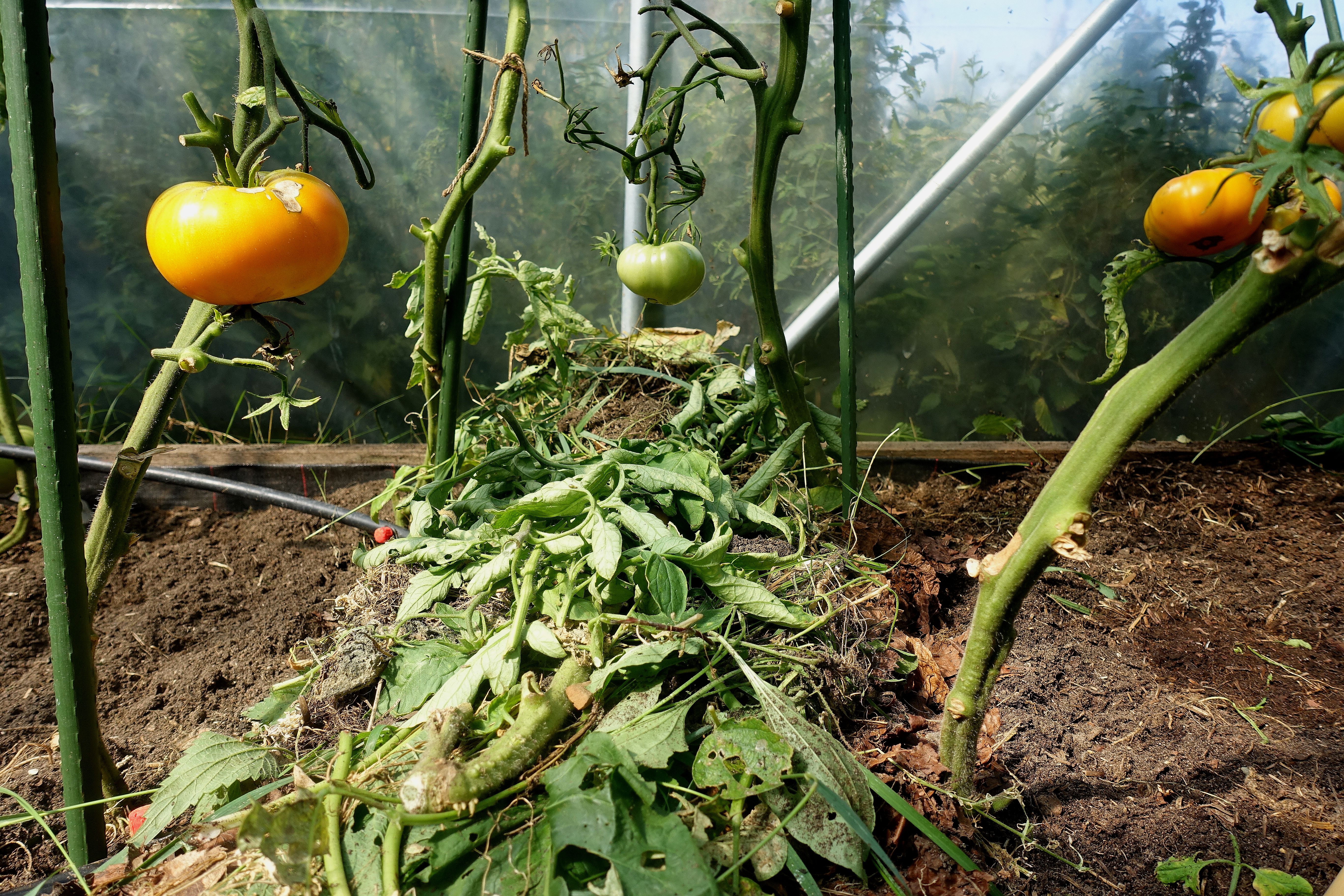
I put the ridges between my tomato plants. I'm going to plant the tomatoes in my mulch when I'm mulching my polytunnels next year. This is the yellow Brandywine tomato variety I have been growing quite a lot of.
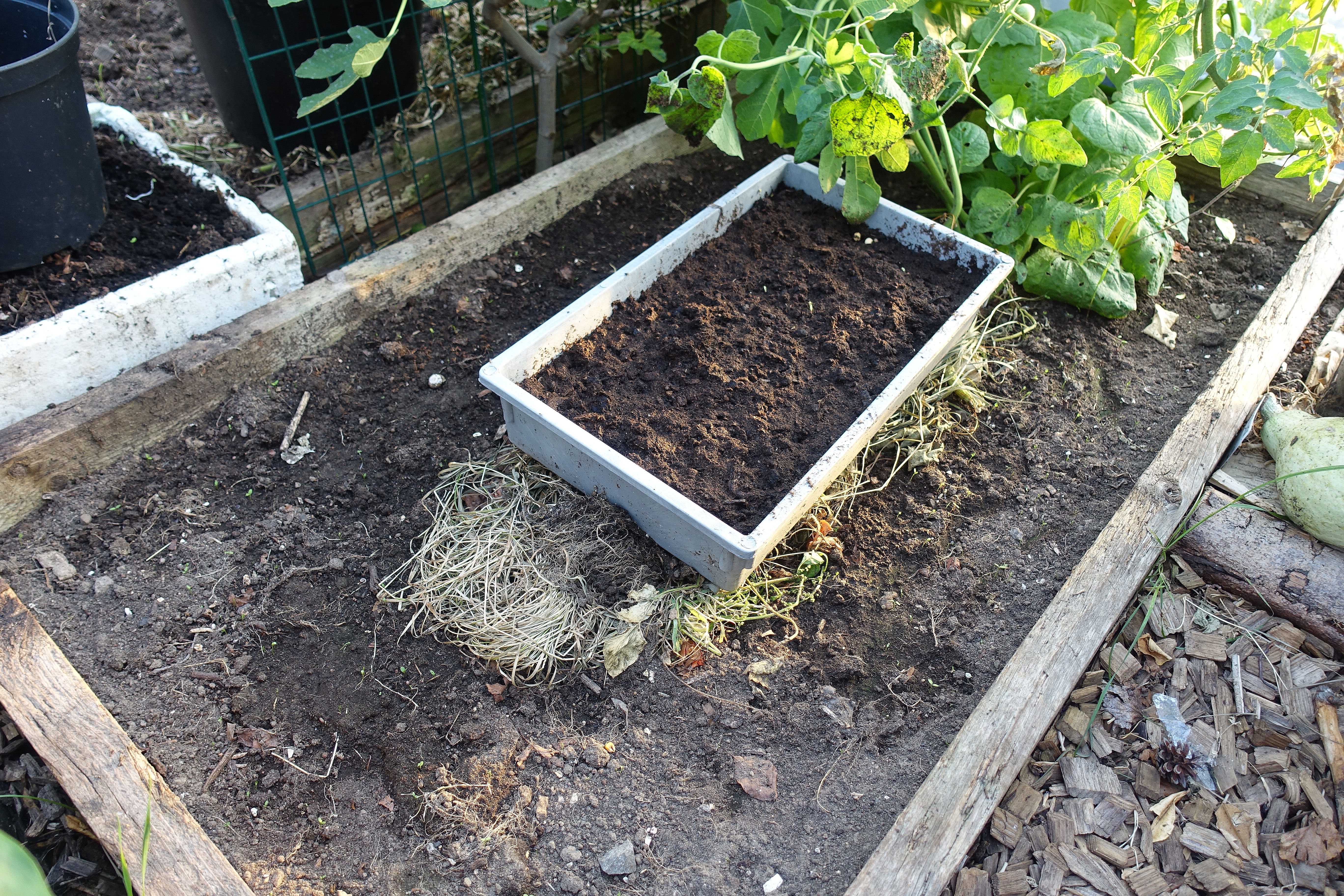
The mulch has started to decompose. I decided to make good use of the excess water from pots and troughs so I put a trough of pea shoots on top of my mulched bed. The extra water will make the process go even faster when mulching my polytunnels.
What to expect
Weeds: I think my main problem is going to be couch grass. So far, I have tried to remove as many of the couch grass roots as possible when I bury my bokashi compost. But if I'm going to start mulching my polytunnels the traditional way, then I won't be able to remove as many roots as before. I might need to do something more drastic to smother the couch grass once and for all. They might spread uncontrollably in the bed if I don't.
Slugs: I usually get a lot of grey garden slugs in my polytunnels in fall, but there are plenty of Spanish slugs here too. I don't really know how they will react to this type of mulching. There's no reason to expect more issues than I already have though, but I might need to find a different way to deal with them. I hope it will be easier when I mulch in ridges though. I can always water with nematodes if the snails decide to hang out in there after all.
I don't think that there are any other spots in here that I need to worry about. The one thing I might need to think about is that I might get ahead of myself. I might want to cover a much bigger surface than I actually can "afford". But that's a later problem!
I'm really excited about mulching my polytunnels more like this in the future too. Have you tried using mulch in your polytunnels too? Let me know in the comments below!
/Sara Bäckmo
19. September 2021
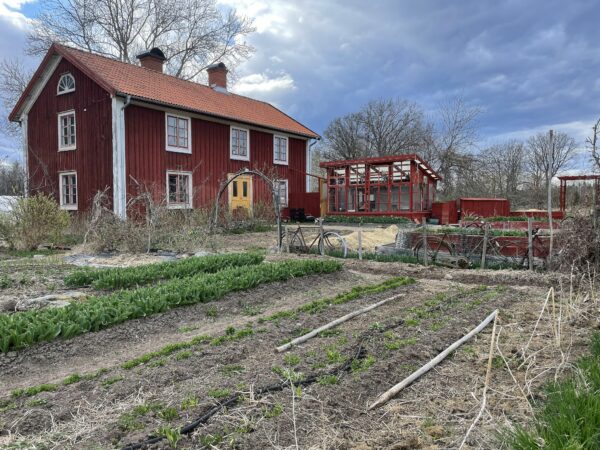
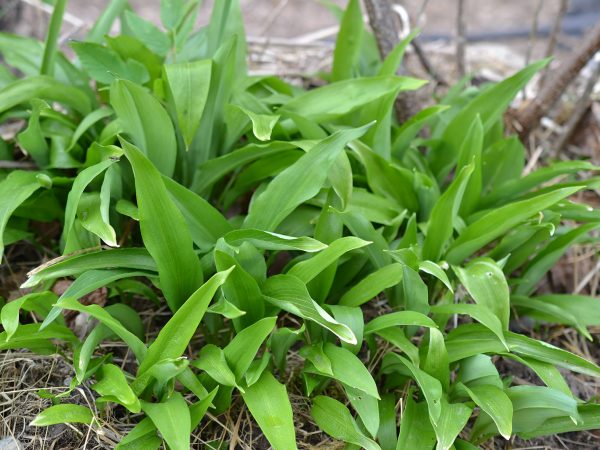
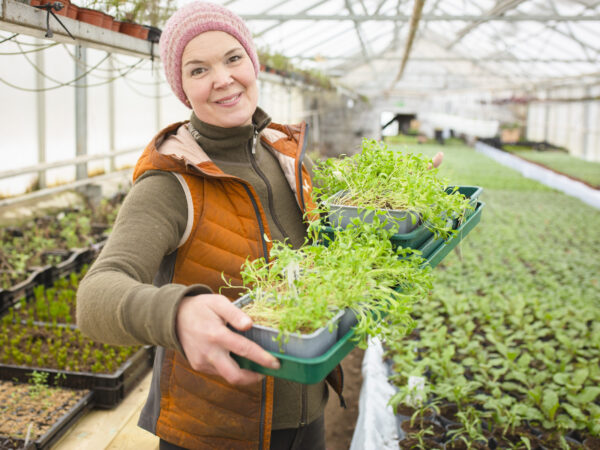
Leave a Reply